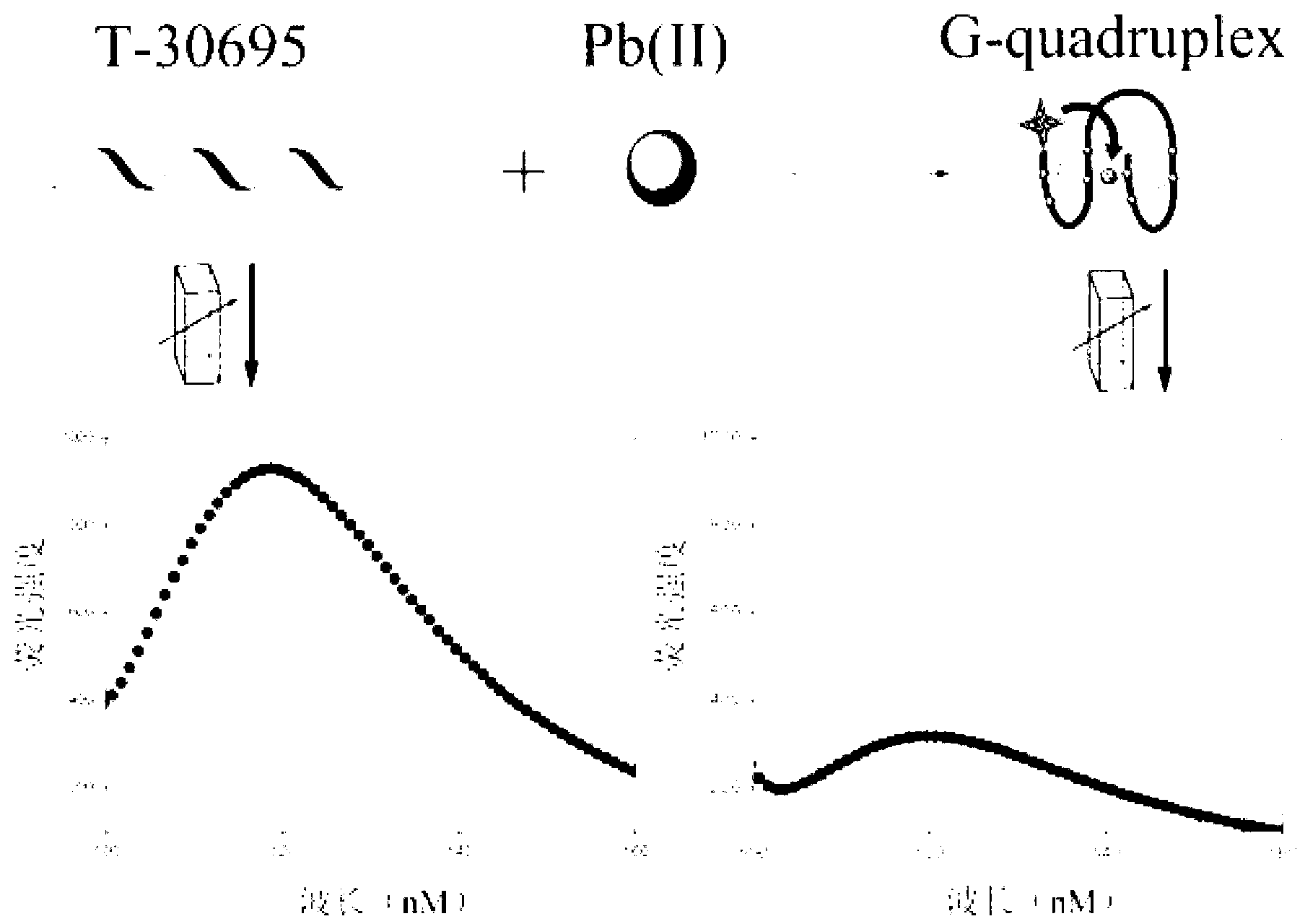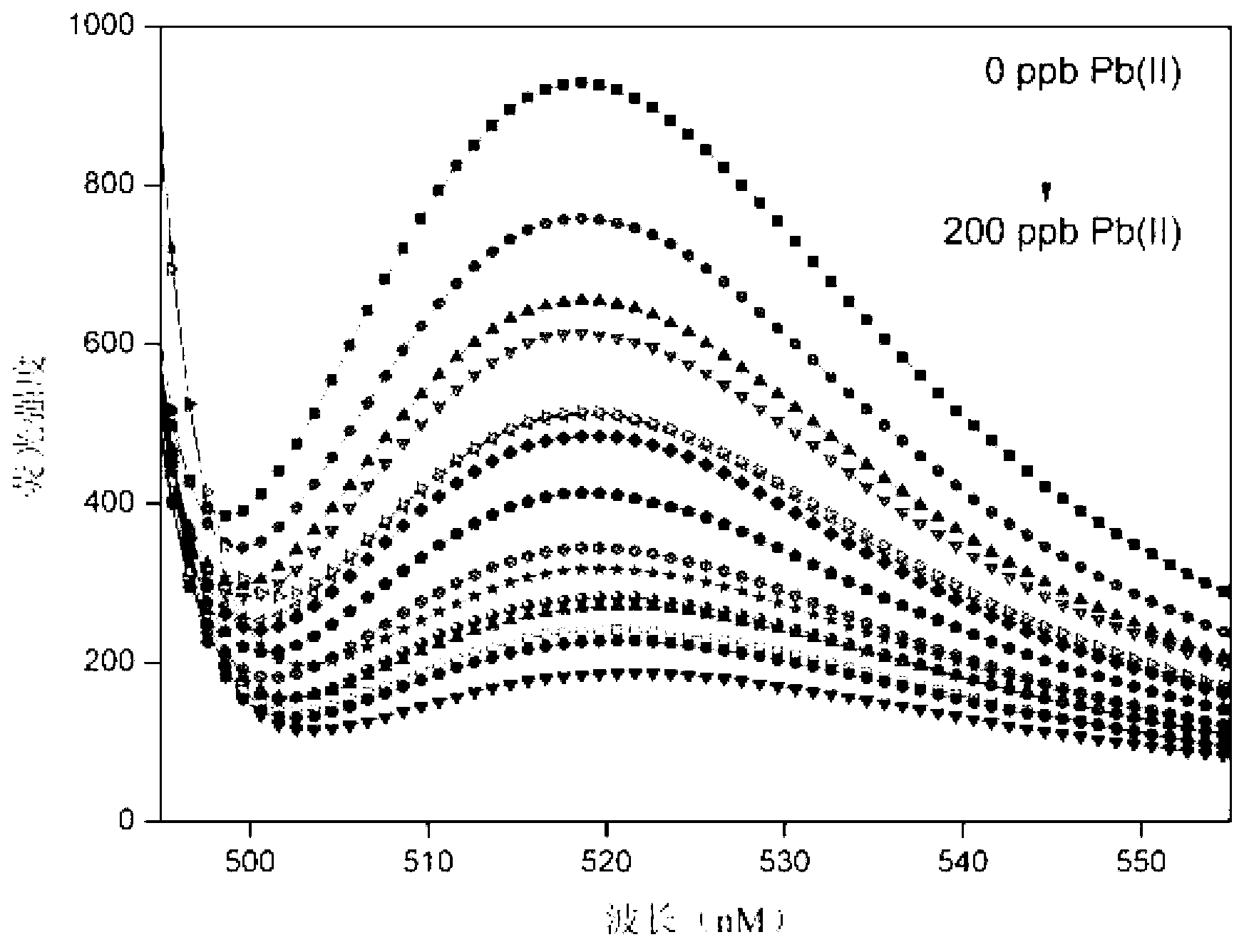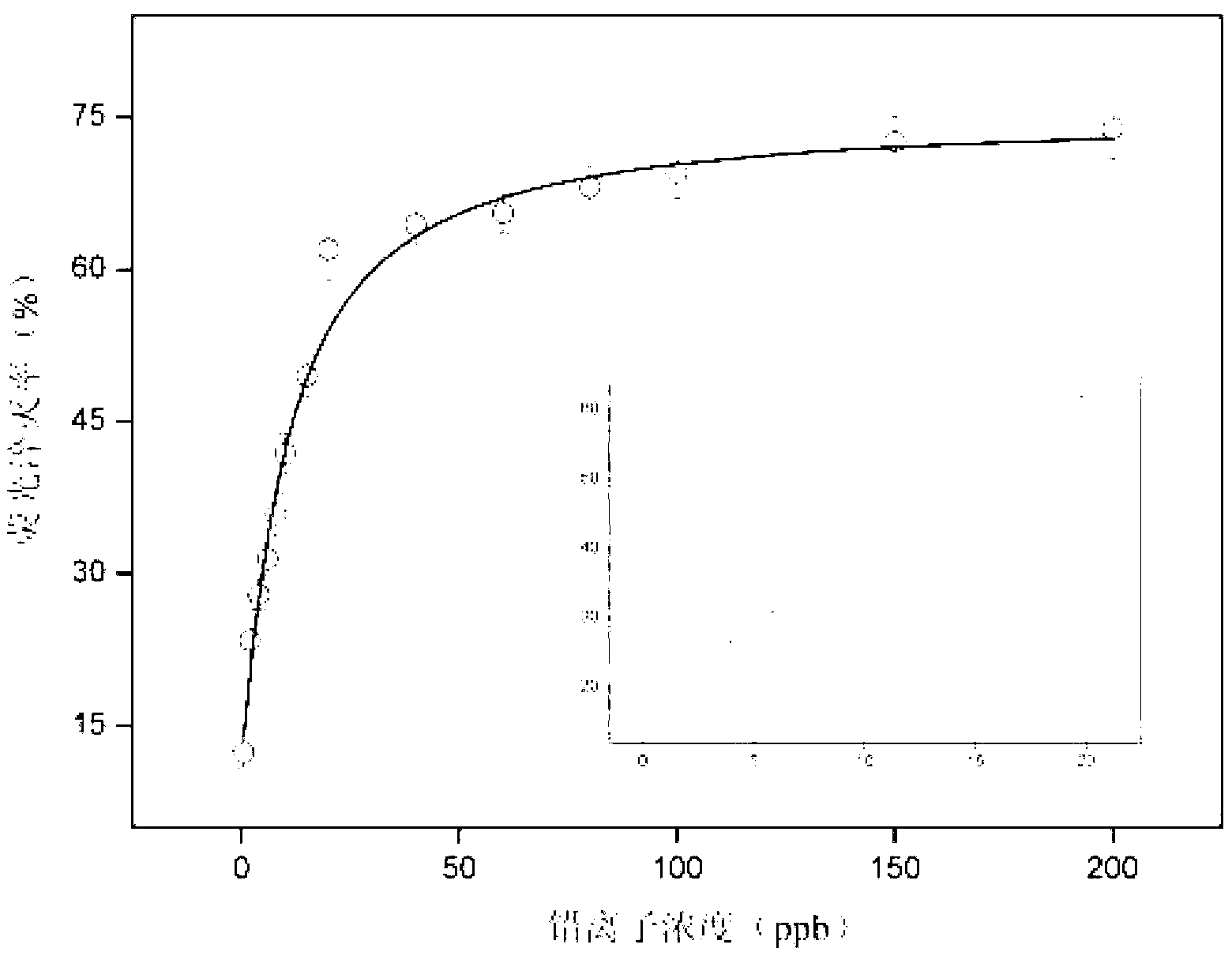Method for detecting lead ions by forming G-quadruplex quenching fluorescent light by using functional nucleic acid
A functional nucleic acid and fluorescence detection technology, applied in fluorescence/phosphorescence, preparation of test samples, DNA/RNA fragments, etc., can solve problems such as complex catalytic reactions, and achieve the effect of good selectivity, fastness and high sensitivity
- Summary
- Abstract
- Description
- Claims
- Application Information
AI Technical Summary
Problems solved by technology
Method used
Image
Examples
Embodiment 1
[0027] This embodiment includes the following steps:
[0028] 1) Prepare the detection system formed by functional nucleic acid: In a 2mL graduated centrifuge tube, add 2.5 μL of the mother solution of functional nucleic acid (sequence: 5’-GGGTGGGTGGGTGGGT-3’) with a concentration of 5 μM, add deionized water to 450 μL, and mix thoroughly. After homogenization, place the centrifuge tube at 25°C for use.
[0029] 2) Prepare a detection system with known lead ion concentration: take 16 centrifuge tubes containing the mixed solution of the detection system formed by functional nucleic acid prepared by step 1), and add 50 μL of lead ion standard solution of different concentrations respectively, so that in the entire detection system The lead content in the sample was maintained at 0.5-200ppb, after mixing thoroughly, the centrifuge tube was incubated at 25°C for 5 minutes, and reserved for the following determination.
[0030] 3) Take another centrifuge tube containing the mixed...
PUM
 Login to View More
Login to View More Abstract
Description
Claims
Application Information
 Login to View More
Login to View More - R&D
- Intellectual Property
- Life Sciences
- Materials
- Tech Scout
- Unparalleled Data Quality
- Higher Quality Content
- 60% Fewer Hallucinations
Browse by: Latest US Patents, China's latest patents, Technical Efficacy Thesaurus, Application Domain, Technology Topic, Popular Technical Reports.
© 2025 PatSnap. All rights reserved.Legal|Privacy policy|Modern Slavery Act Transparency Statement|Sitemap|About US| Contact US: help@patsnap.com



